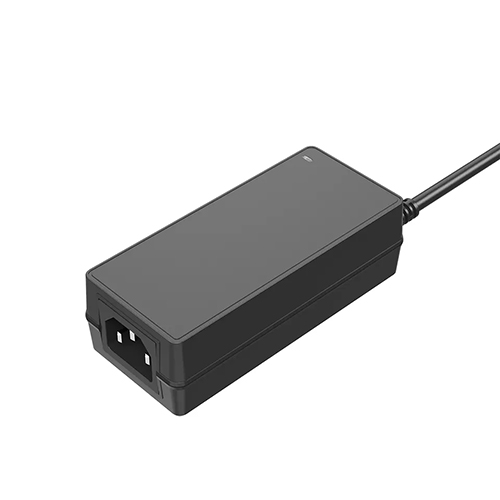Working Principle of Desktop Power Adapter
2024-07-17
A desktop power adapter, often referred to as a power brick, is an external power supply used to provide power to a desktop computer or other electronic devices. It converts AC (alternating current) from a wall outlet into the DC (direct current) required by the device. Here's an overview of its working principle and key components:
Components:
1. AC Input: The plug that connects to a wall outlet, typically providing 110V or 220V AC, depending on the region.
2. Rectifier: Converts AC to DC. This is usually a bridge rectifier consisting of diodes.
3. Filter: Smoothens the DC signal by removing the AC ripples, usually using capacitors.
4. Transformer: Steps down (or sometimes steps up) the voltage to the desired level. It operates on the principle of electromagnetic induction.
5. Voltage Regulator: Ensures that the output voltage remains constant, regardless of variations in the input voltage or output load.
6. DC Output: The connector that plugs into the desktop or device, providing a steady DC voltage.
Working Principle:
1. AC Input:
- The power adapter is plugged into an AC wall outlet.
- AC voltage is typically 110V or 220V, depending on the country.
2. Rectification:
- AC voltage enters the rectifier, which consists of diodes arranged in a bridge configuration.
- The rectifier converts AC voltage to pulsating DC voltage.
3. Filtering:
- The pulsating DC voltage is passed through a filter, usually made up of capacitors.
- The filter smoothens the DC voltage by reducing the AC ripple components, resulting in a more stable DC voltage.
4. Voltage Transformation:
- The smoothed DC voltage is then sent to a transformer.
- The transformer adjusts the voltage to the required level, either stepping it down or up as necessary.
5. Regulation:
- The transformed DC voltage is passed through a voltage regulator.
- The voltage regulator maintains a constant output voltage, even if there are fluctuations in the input voltage or changes in the load (the power being drawn by the device).
6. DC Output:
- The regulated DC voltage is then provided to the device through the DC output connector.
- This connector is typically a barrel jack, USB, or another type of plug specific to the device.
Safety Features:
- Overcurrent Protection: Prevents the adapter from supplying too much current, which could damage the device or the adapter itself.
- Overvoltage Protection: Prevents the output voltage from exceeding a certain level, which could also damage the device.
- Thermal Protection: Shuts down the adapter if it overheats, preventing potential damage or fire hazards.
- Short Circuit Protection: Detects and responds to short circuits by cutting off the power supply, protecting both the adapter and the connected device.
Applications:
- Desktop computers
- Laptops
- Monitors
- Printers
- External hard drives
- Various other electronic devices requiring a stable DC power supply
Maintenance Tips:
- Ensure proper ventilation to prevent overheating.
- Avoid placing the adapter on soft surfaces that might block airflow.
- Regularly check the cables and connectors for wear and tear.
- Use the adapter within the specified voltage and current ratings to avoid damage.
Understanding how a desktop power adapter works helps in troubleshooting power-related issues and ensuring the longevity of both the adapter and the connected devices.



